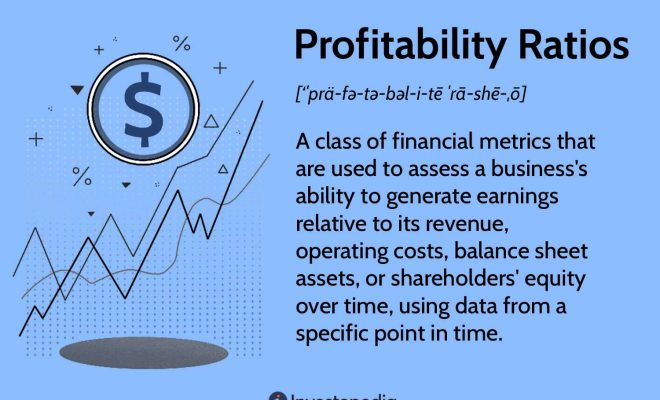How to calculate profitability

Profitability is a crucial metric in business, as it indicates the financial health and overall success of an organization. By measuring profitability, businesses can assess their financial performance, make informed decisions, and ensure long-term stability. This article will guide you through the process of calculating profitability using simple and effective methods.
Understanding Profitability:
Profitability is the ability of a business to generate revenue that exceeds its expenses and other costs associated with its operations. When a company’s revenues surpass its expenses, it is considered profitable. There are several ways to calculate profitability, with the most common being gross profit margin, net profit margin, and return on investment (ROI).
1. Gross Profit Margin:
The gross profit margin is a ratio that measures how much money a company makes selling goods or services after accounting for the direct costs of producing them (also known as cost of goods sold or COGS). It is calculated using the following formula:
Gross Profit Margin = (Total Revenue – Cost of Goods Sold) / Total Revenue
By measuring the gross profit margin, businesses can determine their efficiency in producing goods or services and identify areas for improvement.
2. Net Profit Margin:
The net profit margin takes into account not only COGS but also other expenses such as operating expenses, taxes, and interest. This ratio gives a more accurate picture of a company’s overall profitability by considering all costs associated with doing business. The formula for calculating net profit margin is:
Net Profit Margin = (Total Revenue – Total Expenses) / Total Revenue
A high net profit margin signifies that a business is managing its expenses efficiently and generating more profit per dollar of revenue.
3. Return on Investment (ROI):
ROI calculates how well an investment has performed by comparing its returns to the initial investment amount.
ROI is essential for businesses to ascertain the effectiveness of different investments in generating profits. The
formula for ROI is:
ROI = (Net Profit / Investment) * 100
A higher ROI signifies that the investment has yielded more profits relative to its cost.
Tips for Improving Profitability:
To enhance a company’s profitability, business owners should consider implementing the following strategies:
1. Optimize pricing: Analyze the market and competition to ensure your pricing strategy is in line with industry standards and offers value to customers.
2. Control expenses: Regularly review and manage overhead costs, eliminate unnecessary expenses, and negotiate with vendors for better deals.
3. Boost efficiency: Streamline processes, invest in automation wherever possible, and measure productivity to identify areas for improvement.
4. Expand market reach: Implement marketing strategies to reach new audiences and customer segments.
Conclusion:
Calculating profitability is crucial for businesses to evaluate their financial performance and identify areas for growth. By understanding gross profit margin, net profit margin, and ROI, companies can make informed decisions about managing costs and investing in revenue-generating initiatives. By focusing on improving pricing strategies, controlling expenses, increasing efficiency, and expanding market reach, businesses can ultimately boost their profitability and ensure long-term success.






